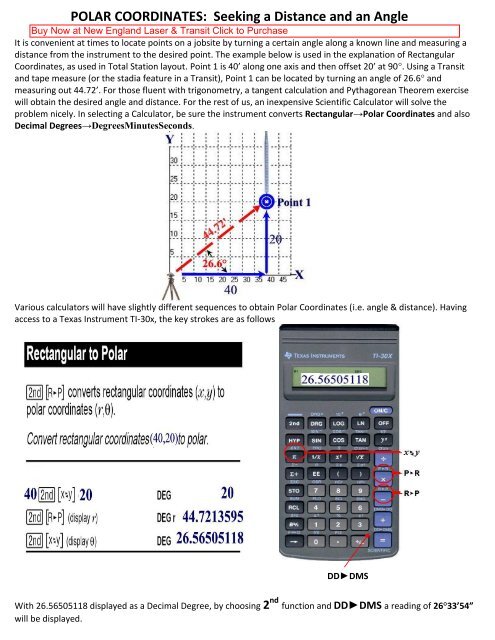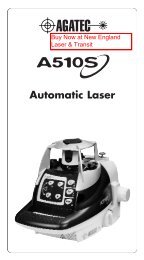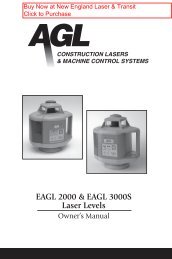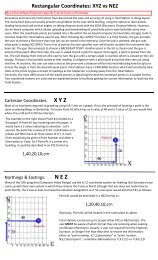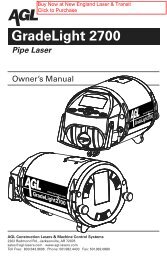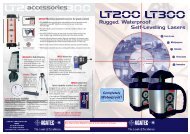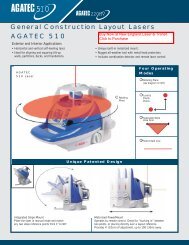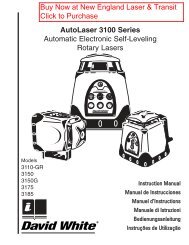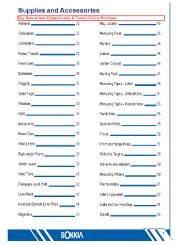POLAR COORDINATES - New England Laser & Transit Company
POLAR COORDINATES - New England Laser & Transit Company
POLAR COORDINATES - New England Laser & Transit Company
- No tags were found...
You also want an ePaper? Increase the reach of your titles
YUMPU automatically turns print PDFs into web optimized ePapers that Google loves.
<strong>POLAR</strong> <strong>COORDINATES</strong>: Seeking a Distance and an AngleIt is convenient at times to locate points on a jobsite by turning a certain angle along a known line and measuring adistance from the instrument to the desired point. The example below is used in the explanation of RectangularCoordinates, as used in Total Station layout. Point 1 is 40’ along one axis and then offset 20’ at 90°. Using a <strong>Transit</strong>and tape measure (or the stadia feature in a <strong>Transit</strong>), Point 1 can be located by turning an angle of 26.6° andmeasuring out 44.72’. For those fluent with trigonometry, a tangent calculation and Pythagorean Theorem exercisewill obtain the desired angle and distance. For the rest of us, an inexpensive Scientific Calculator will solve theproblem nicely. In selecting a Calculator, be sure the instrument converts Rectangular→Polar Coordinates and alsoDecimal Degrees→DegreesMinutesSeconds.Various calculators will have slightly different sequences to obtain Polar Coordinates (i.e. angle & distance). Havingaccess to a Texas Instrument TI-30x, the key strokes are as followsDD►DMSWith 26.56505118 displayed as a Decimal Degree, by choosing 2 nd function and DD►DMS a reading of 26°33’54”will be displayed.
To use N/E instead of X/Y, such as shown:the results would be the following:With 63.4349488 displayed as a Decimal Degree, by choosing 2 nd function and DD►DMS a reading of 63°26’05”will be displayed.


